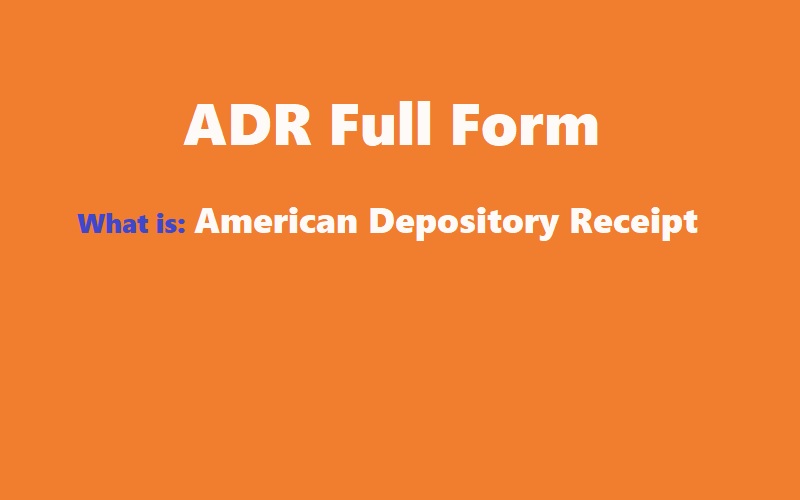
Sovereign bonds are bonds issued by governments. These bonds can be issued in the country’s local currency or in a foreign currency. The proceeds from issuing sovereign bonds are used by governments to fund the country’s infrastructure projects and/or to fund the government’s budget deficit.
Just like any other bonds, sovereign bonds pay coupon or interest at fixed regular intervals and payback principal on the maturity date.

Sovereign debt issued by the United States of America are called US Treasury debt. Treasuries with a maturity of:
- One year or less are called Treasury bills
- Between two and ten years are called Treasury notes
- Between 10 and 30 years are called Treasury bonds
US Treasury yields are tracked very closely by bond investors worldwide as they act as a benchmark for all US dollar denominated bonds.
The most commonly tracked Treasury yields are the 3-month Treasury yield, 2 year Treasury yield, 10 year Treasury yield and 30 year Treasury yield.
In particular the 10 year Treasury yield is the most commonly tracked Treasury yield as that is considered to be a benchmark for US government bonds.

Other commonly tracked government bond yields are yields of Japanese government bonds (JGBs), German government bonds (bunds) and UK government bonds (UK GILTs).
Since USD is the dominant currency for international trade. Many emerging market governments choose to issue sovereign bonds denominated in USD. The proceeds from these bonds are typically used to fund the country’s imports, which are billed in USD.
Some of the most common issuers of USD sovereign bonds are:
- Republic of Indonesia
- Republic of The Philippines
- Kingdom of Saudi Arabia
- State of Qatar
- Republic of Turkey
- Republic of South Africa
- Democratic Socialist Republic of Sri Lanka
- Federation of Russia
- Kingdom of Bahrain
It is important to note that each sovereign bond’s risk is linked to the creditworthiness of that country’s government.
Investors can understand the creditworthiness of a country by looking at it’s credit rating, which is assigned by the 3 dominant rating agencies – S&P, Moody’s and Fitch.
These credit ratings can be used to compare the risk attached to different bonds with AAA being the highest and D being the lowest credit rating.
The credit rating for the United States is AA+, which makes sovereign bonds from US i.e.
Treasury bonds one of the safest sovereign bonds in the world. This is the reason why Treasury bond yields are low compared to other sovereign bonds.
The current 10 year Treasury yield is 1.81% as on 15th January 2020.
This means that investors can expect an annual return of 1.81%. If they invest in the 10 year US Treasury bond.
On the other hand, the credit rating of Sri Lanka is B, which makes its sovereign bonds more risky.
The increased credit risk associated with Sri Lankan.
sovereign bonds is the reason why the yield on a 10 year Sri Lanka
Sovereign bond is 7.5% (Sri Lanka 7.55% bond due 2030).
Thus investors must review the credit ratings of the sovereign bonds carefully before making an investment decision.
Also Read – Eurodollar bonds










Наиболее трендовые новинки моды.
Исчерпывающие новости мировых подуимов.
Модные дома, бренды, haute couture.
Лучшее место для модных хайпбистов.
https://malemoda.ru/
Абсолютно важные новости мировых подиумов.
Актуальные мероприятия известнейших подуимов.
Модные дома, бренды, высокая мода.
Самое приятное место для модных хайпбистов.
https://fashionvipclub.ru/
Самые свежие события мировых подиумов.
Актуальные события известнейших подуимов.
Модные дома, бренды, гедонизм.
Свежее место для стильныех людей.
https://sneakersgo.ru/
Абсолютно свежие новости мировых подиумов.
Исчерпывающие мероприятия лучших подуимов.
Модные дома, бренды, гедонизм.
Самое лучшее место для стильныех людей.
https://sneakerside.ru/
Точно трендовые новинки моды.
Актуальные эвенты известнейших подуимов.
Модные дома, лейблы, гедонизм.
Самое приятное место для трендовых хайпбистов.
https://ulmoda.ru/
Очень трендовые новости мира fashion.
Абсолютно все события мировых подуимов.
Модные дома, бренды, haute couture.
Новое место для трендовых людей.
https://paris.luxepodium.com/
Несомненно трендовые события подиума.
Важные события лучших подуимов.
Модные дома, торговые марки, гедонизм.
Новое место для стильныех людей.
https://luxury.superpodium.com/
Style, luxe, travel
First style website for hypebeasts and stylish people.
Industry news, events. Latest collections, collaborations, drops.
https://watch.lepodium.net/
Fashion, luxury, lifestyle
Good fashion home for hypebeasts and stylish people.
Style news, events. Last collections, collaborations, limited editions.
https://watch.lepodium.net/
Абсолютно актуальные новинки моды.
Актуальные мероприятия лучших подуимов.
Модные дома, бренды, высокая мода.
Интересное место для модных хайпбистов.
https://richlifestyle.ru/
Fashion, luxe, hedonism
The best fashion application for hypebeasts and stylish people.
Podium news, events. Latest collections, collaborations, limited editions.
https://london.luxepodium.com/
Fashion, luxe, lifestyle
First style portal for hypebeasts and cute people.
Style news, events. New collections, collaborations, limited editions.
https://lepodium.in/
Очень важные события подиума.
Исчерпывающие эвенты всемирных подуимов.
Модные дома, торговые марки, высокая мода.
Самое лучшее место для трендовых хайпбистов.
https://furluxury.ru/
Все свежие новости часового искусства – новые новинки культовых часовых домов.
Все варианты часов от доступных до супер премиальных.
https://podium24.ru/
Абсолютно свежие события подиума.
Актуальные эвенты лучших подуимов.
Модные дома, торговые марки, haute couture.
Самое лучшее место для модных людей.
https://balenciager.ru/
Pretty great post. I just stumbled upon your blog and wanted to mention that I’ve really enjoyed browsing your blog posts. In any case I will be subscribing to your rss feed and I hope you write once more soon!
Несомненно актуальные новости мировых подиумов.
Актуальные мероприятия мировых подуимов.
Модные дома, лейблы, гедонизм.
Новое место для трендовых хайпбистов.
https://outstreet.ru/
Точно свежие события мировых подиумов.
Актуальные новости известнейших подуимов.
Модные дома, бренды, гедонизм.
Самое лучшее место для модных людей.
https://luxe-moda.ru/
LeCoupon: актуальные новинки для любителей вещевого шоппинга
Лента новостей, события, стильные луки, эвенты, дропы, подиум.
https://qrmoda.ru/
LeCoupon: трендовые события для любителей fashion шоппинга
Лента новостей, события, стильные образы, эвенты, дропы, подиум.
https://qrmoda.ru/
I have to express some thanks to this writer for rescuing me from such a matter. Right after scouting throughout the internet and getting views which were not helpful, I figured my entire life was over. Being alive without the presence of solutions to the difficulties you have sorted out all through your main short post is a serious case, as well as the kind which could have in a negative way damaged my entire career if I had not noticed your website. The knowledge and kindness in touching the whole thing was crucial. I’m not sure what I would’ve done if I hadn’t come across such a point like this. I’m able to now look ahead to my future. Thank you so much for your reliable and sensible help. I will not be reluctant to recommend the website to anybody who would need support on this problem.
Good day very cool blog!! Man .. Excellent .. Superb .. I’ll bookmark your blog and take the feeds also?KI am happy to search out so many helpful information here in the post, we want develop extra techniques in this regard, thanks for sharing. . . . . .
Oh my goodness! an incredible article dude. Thanks Nonetheless I am experiencing difficulty with ur rss . Don’t know why Unable to subscribe to it. Is there anyone getting similar rss drawback? Anyone who is aware of kindly respond. Thnkx
Очень трендовые события мира fashion.
Все новости лучших подуимов.
Модные дома, бренды, haute couture.
Свежее место для трендовых хайпбистов.
https://egomoda.ru/
Точно важные события мировых подиумов.
Важные мероприятия всемирных подуимов.
Модные дома, торговые марки, высокая мода.
Свежее место для стильныех людей.
https://fashion5.ru/
I’d have to examine with you here. Which is not one thing I usually do! I take pleasure in reading a post that may make folks think. Additionally, thanks for permitting me to comment!
Полностью актуальные новости индустрии.
Абсолютно все эвенты известнейших подуимов.
Модные дома, торговые марки, высокая мода.
Интересное место для трендовых хайпбистов.
https://whitesneaker.ru/
Абсолютно актуальные новинки индустрии.
Исчерпывающие мероприятия самых влиятельных подуимов.
Модные дома, лейблы, гедонизм.
Самое лучшее место для трендовых хайпбистов.
https://rfsneakers.ru
I have learn several good stuff here. Definitely worth bookmarking for revisiting. I wonder how a lot effort you put to create this kind of magnificent informative site.
Очень свежие новинки моды.
Актуальные события мировых подуимов.
Модные дома, торговые марки, haute couture.
Приятное место для трендовых людей.
https://urban-moda.ru/
Точно трендовые события мировых подиумов.
Важные эвенты лучших подуимов.
Модные дома, лейблы, высокая мода.
Интересное место для модных хайпбистов.
https://miramoda.ru
Spot on with this write-up, I actually assume this web site wants rather more consideration. I’ll most likely be again to learn much more, thanks for that info.
Наиболее стильные новости индустрии.
Абсолютно все эвенты всемирных подуимов.
Модные дома, торговые марки, haute couture.
Новое место для стильныех хайпбистов.
https://sofiamoda.ru
Полностью важные новости индустрии.
Исчерпывающие события известнейших подуимов.
Модные дома, лейблы, гедонизм.
Интересное место для трендовых людей.
https://worldsfashion.ru/
Наиболее важные новости моды.
Важные новости всемирных подуимов.
Модные дома, бренды, высокая мода.
Интересное место для модных хайпбистов.
https://fashionsecret.ru
Thank you for your entire effort on this blog. My niece take interest in going through investigation and it’s really easy to understand why. We hear all of the dynamic mode you provide simple guidelines via your website and therefore inspire response from visitors about this article while our favorite princess is undoubtedly starting to learn a lot. Take pleasure in the remaining portion of the year. You have been conducting a really great job.
mexico pharmacies prescription drugs: mexican pharmacy – mexico drug stores pharmacies
mexican rx online
https://cmqpharma.com/# mexican border pharmacies shipping to usa
purple pharmacy mexico price list
Абсолютно важные новинки подиума.
Абсолютно все новости мировых подуимов.
Модные дома, торговые марки, высокая мода.
Самое лучшее место для модных людей.
https://fashionvipclub.ru/news/2024-06-19-gruzin-kotoryy-perevernul-mirovuyu-modu-demna-gvasaliya/
Абсолютно актуальные новости моды.
Исчерпывающие эвенты лучших подуимов.
Модные дома, бренды, haute couture.
Приятное место для модных людей.
https://hypebeasts.ru/
Полностью актуальные новинки мировых подиумов.
Абсолютно все эвенты всемирных подуимов.
Модные дома, бренды, гедонизм.
Приятное место для трендовых людей.
https://luxe-moda.ru/chic/162-loro-piana-lyubimyy-brend-politikov-i-biznesmenov/
Наиболее свежие новинки мировых подиумов.
Актуальные новости известнейших подуимов.
Модные дома, торговые марки, гедонизм.
Самое приятное место для стильныех хайпбистов.
https://balmain1.ru/balmain/381-kak-otlichit-originalnyy-balmain-ot-poddelki/
Hello There. I found your weblog using msn. This is a really well written article. I’ll be sure to bookmark it and return to learn more of your helpful information. Thank you for the post. I will definitely comeback.
Hello There. I discovered your weblog the use of msn. This is an extremely smartly written article. I will make sure to bookmark it and return to read extra of your helpful info. Thank you for the post. I’ll definitely comeback.
Very interesting information!Perfect just what I was searching for!Raise blog range
What Is Java Burn? Java Burn is a natural health supplement that is formulated using clinically backed ingredients that promote healthy weight loss.
Wow! This blog looks just like my old one! It’s on a entirely different subject but it has pretty much the same layout and design. Superb choice of colors!
I do like the way you have framed this specific situation and it does provide me some fodder for consideration. On the other hand, through what precisely I have witnessed, I really trust when the actual responses pack on that men and women remain on point and not start on a soap box involving the news of the day. Yet, thank you for this superb point and while I do not go along with this in totality, I value your perspective.
https://indiapharmast.com/# india pharmacy mail order
vipps approved canadian online pharmacy canadian pharmacies that deliver to the us escrow pharmacy canada
mexico drug stores pharmacies: pharmacies in mexico that ship to usa – pharmacies in mexico that ship to usa
canadian compounding pharmacy: canadian drug – canadian drugstore online
Online medicine home delivery: top 10 online pharmacy in india – world pharmacy india
indianpharmacy com top 10 pharmacies in india pharmacy website india
https://indiapharmast.com/# mail order pharmacy india
п»їbest mexican online pharmacies: п»їbest mexican online pharmacies – best online pharmacies in mexico
canadian pharmacy checker: canadian pharmacy 24h com – canadian pharmacy meds
best online pharmacy india pharmacy website india best online pharmacy india
canada drug pharmacy: canada drugs online review – best rated canadian pharmacy
https://foruspharma.com/# medicine in mexico pharmacies
canadian mail order pharmacy: canadian pharmacy meds review – best mail order pharmacy canada
indianpharmacy com: indianpharmacy com – cheapest online pharmacy india
legitimate canadian mail order pharmacy reputable canadian online pharmacy rate canadian pharmacies
buying prescription drugs in mexico online: mexican rx online – mexican pharmacy
canada pharmacy reviews: canadian pharmacy oxycodone – best canadian pharmacy online
india online pharmacy: buy medicines online in india – india pharmacy
amoxicillin pharmacy price: purchase amoxicillin online without prescription – amoxicillin without rx
https://ciprodelivery.pro/# ciprofloxacin over the counter
http://doxycyclinedelivery.pro/# doxycycline generic cost
https://doxycyclinedelivery.pro/# doxycycline medication
http://ciprodelivery.pro/# where can i buy cipro online
https://clomiddelivery.pro/# can i order generic clomid price
https://clomiddelivery.pro/# buy clomid
http://doxycyclinedelivery.pro/# doxycycline cost in mexico
https://ciprodelivery.pro/# antibiotics cipro
https://paxloviddelivery.pro/# paxlovid buy
paxlovid price: paxlovid buy – paxlovid for sale